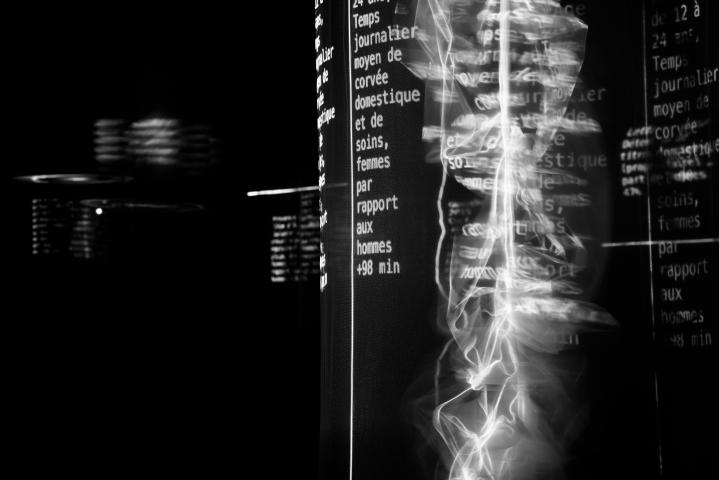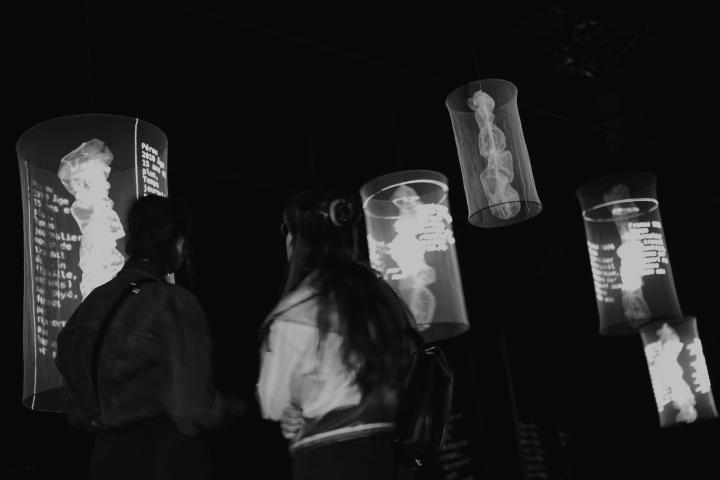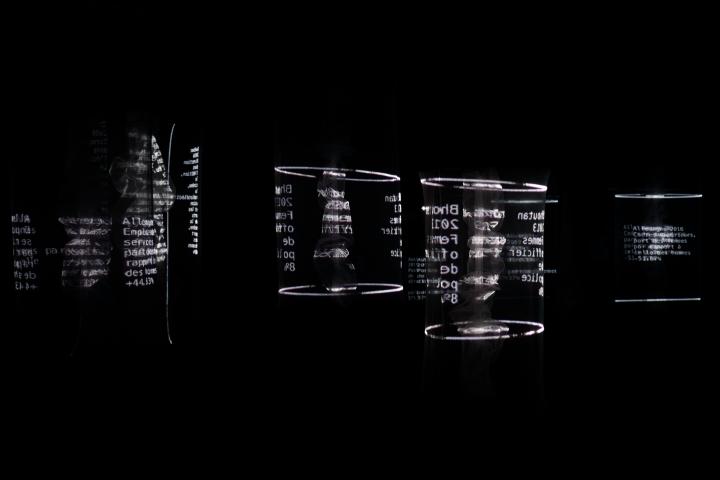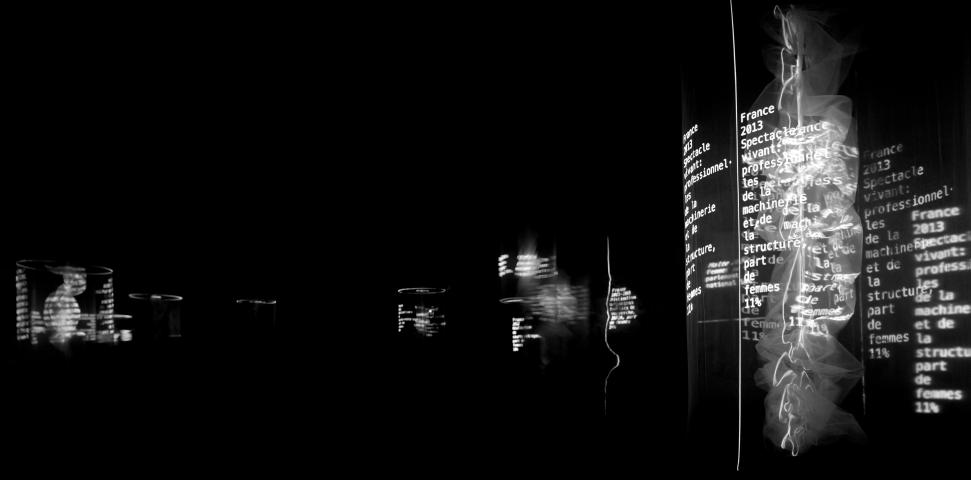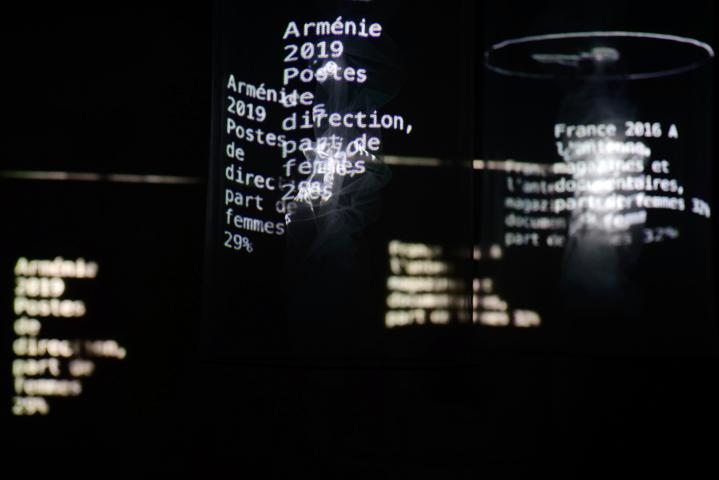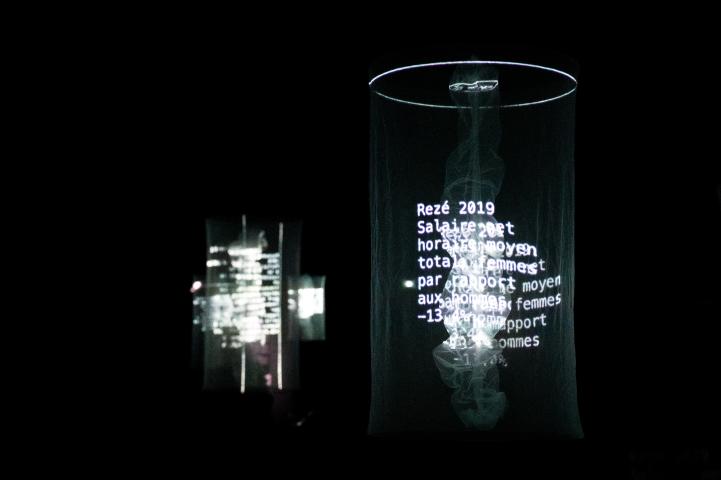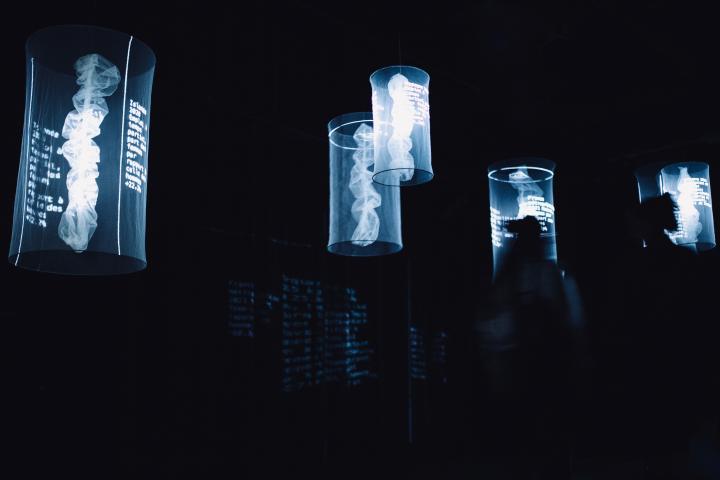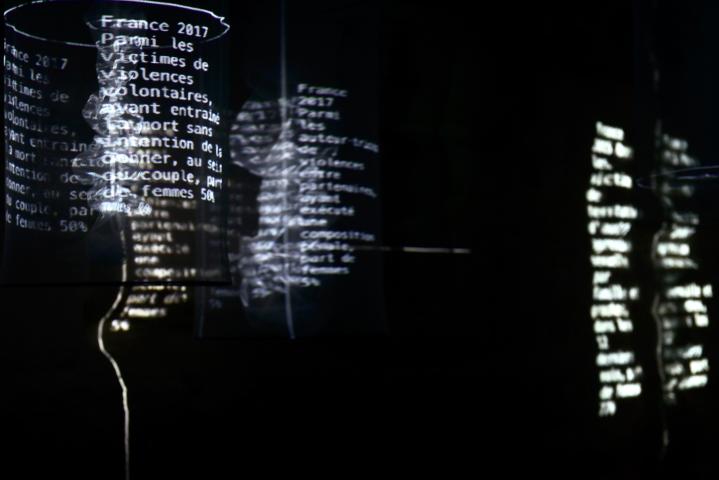Find out more
How to show, in a sensitive way, the inequalities and the context of domination between men and women?
In the dark, within a nebulous sound environment, organic-looking mobiles move on whose surface freezes statistical data relating to gender inequalities.
Invisible walls is a sound, plastic and immersive installation that uses gender statistics in free access as materials, in order to translate a social fact and make tangible the glass ceiling and other walls that are invisible only in name.
The reflection supported by the work centers around the mythological, symbolic and deeply ambivalent figure of Medusa who, freezing the one who looks at her in the face, can designate the terrifying power of the feminine as well as the general and repeated opinion which paralyzes and impedes thought.
The three stages that make up the work (Disappearance, Gap, Violence) each focus on a specific aspect of the relationship of domination and model the sound environment in a different way. Depending on the nature of the statistical discrepancy, the sounds and shapes that make up the work will be deteriorated, saturated or even rendered inaudible. During its wanderings, the public therefore experiences physically and in a sensitive way the inequalities and social asperities that the conventional methods of presenting statistics sometimes struggle to make concrete.
The use of local data (place, city, department, region of the exhibition) in addition to national and international data, creates immediate proximity with the spectators. There then appears a kind of address of the work to the place that receives it.
Through this device, the IAKERI collective wishes to account for the way in which reliefs, hollows, forms of organization and power come to operate in our societies.
The IAKERI collective is the meeting of three women (Jimena Royo-Letelier, Alice Guerlot-Kourouklis, Aneymone Wilhelm) with varied backgrounds. Strongly attached to the work of matter, to sound as a political weapon, to a critical and reflective use of technologies, as well as to the porosity between science and creation, he brings out dialogues between disciplines and places them in socio-political questions.






